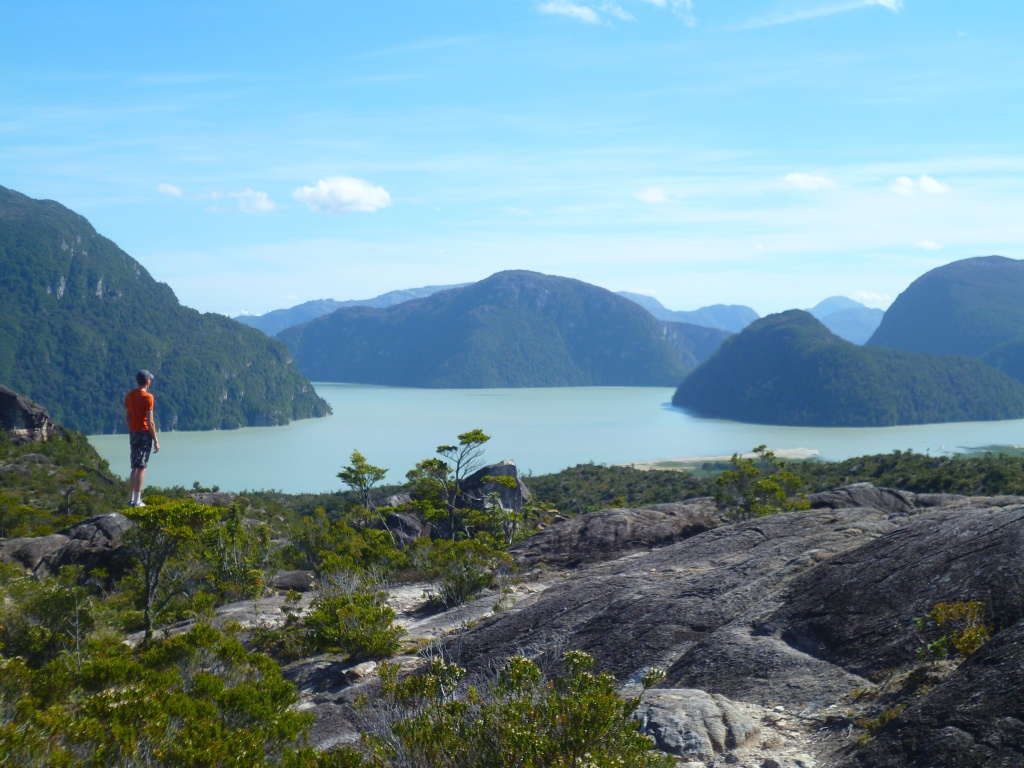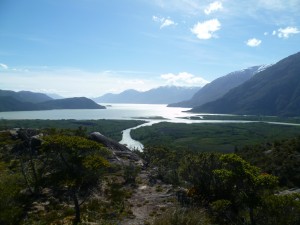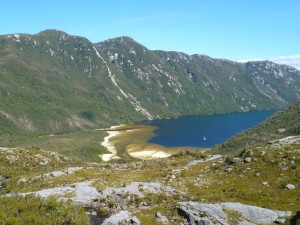Sin represas = Without dams; This is the message on thousands of Chileans’ lips.
Chilean Patagonia is the most pristine wilderness we have ever set foot in. Tumbling waterfalls, towering snow-capped fjords, glaciers unfolding into pristine valleys, heaving with wildlife. We sailed for weeks without seeing a single human being; our mouths just hanging open in a wilderness of superlatives.
Yet in the Aysén region of Patagonia, five massive hydroelectric dams schemes have just been approved by the Chilean government on the Rios Baker and Pascua ‘two of the world’s wildest rivers’ (Guardian, May 2011). Incredible rivers, bounded by staggering wild scenery, bursting with turquoise water from the world’s two largest ice caps outside of Antarctica and Greenland (see article links below).
THE PROBLEM WITH THE DAMS:
- Drown 6,000 hectares of wilderness (not forgetting villages).
- Change in river dynamics: scouring and depositon of nutrients, aeration, erosion, creation/erosion of habitats.
- Create a 25% reduction in sediment load and 100% reduction of original bed load downstream of dam.
- Reduced sediment load = erosion: loss of bank habitat, beaches (spawning grounds) and eventually the delta.
- The suspended glacial load can be seen far into the fjords, potentially providing nutrients for plankton at the base of the food chain that supports the rich marine communities in the area, including huge concentration of whales.
- Fish and other organisms can no longer migrate up or down stream.
- Overtime the dams silt up and either the dams are abandoned, or major engineering work is needed.
- Development in this wilderness could encourage further industry due to energy source and lake, potentially increasing pollution and environmental impact in the future.
Dams are a geography text book disaster. Across Europe and around the world, scientists and planners are starting to realize that concreting rivers into a ‘straight-jacket’ is the equivalent of a hangman’s noose to a river’s life.
In addition to the concreting (which demands energy), transmission lines will march north to Chile’s capital, Santiago and to the mining areas in the north which demand most of Chile’s energy:
‘The transmission lines would run north, held by towers more than 200 feet high. Following a winding corridor almost 400 feet wide, a thousand miles of forest would be clear-cut and the rest of the corridor’s path similarly cleared. The corridor would intersect 64 communities and 14 protected areas. It would divide endangered forests and some of Chile’s most spectacular national parks’ (Sin Represas).
But what’s the alternative???? We’re all demanding more energy after all…:
Chile may not have fossil fuels (it imports 97%) but it is bristling with alternative energy:
- SOLAR
- WIND
- GEO-THERMAL
- WAVE
Currently 40% of Chile’s energy is produced by hydropower and 50% through natural gas. 70% of Chile’s electricity demand is created from mining and industry, dominated by copper. This is situated mainly in the desert in the north of the country. Creating energy sources where the demand is greatest would reduce energy inefficiencies and prevent the projected 97% of emissions created by clearing temperate rainforest and other habitat for the transmission lines.
Everything we do has an ecological consequence, but surely a mix of solutions from: solar panels in the north, small scale hydro-electric schemes for communities in the scarcely populated south and central regions, as well as wind and wave power would make so much more sense than this wilderness carnage?
We sailed through Tortel on our passage south through Chile (photos) and the overwhelming view from this little town at the mouth of the Rio Baker was complete resistance to the proposals.
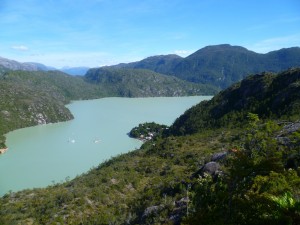 Maria, a local hotel owner who took us under her wing, voiced the concerns of the community. One particular aspect she was worried about was the male work force that would arrive to construct the dam and upset the dynamic of the town, which is very presently peaceful and safe.
Maria, a local hotel owner who took us under her wing, voiced the concerns of the community. One particular aspect she was worried about was the male work force that would arrive to construct the dam and upset the dynamic of the town, which is very presently peaceful and safe.
A Chilean friend of ours, Octavio Nef, who works in eco-tourism which is blooming in Chile, providing employment in the countryside, asked us to publish his views on the proposed dams (below in English and Spanish):
“If the proposed dams in Patagonia are constructed, the environmental impact will be global. This statement might sound alarmist, or without basis, so I will try to be clear in my explanations:.
The rivers Pascua and Baker rise respectively in the Southern and Northern ice sheets of Chile, both flowing to the south of the Golfo de Penas, where they meet the peninsular of Taitao. Here a huge mixing effect occurs between the river water and those of the Humbolt current, with the rivers contributing large quantities of nutrients and aiding maintenance of essential cold temperatures.
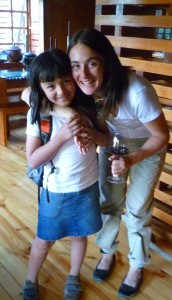
The Humbolt current is the principle factor contributing to the climate of the greater part of South America. If its temperatures are altered, one can only imagine the impact on South America’s climate. It must be remembered that, if a river is dammed (like the Baker or Pascua) it transforms into two distinct rivers, the one rising above the dam and the other below it (in fact, Maule and Bio-bio should be called Rio Colbun S.A.). The river that rises from a lake or dam has a higher temperature to a natural river. It also loses nutrients to the dam, as they are laid down in the lake rather than flowing down stream.
All this is without considering the contamination of the river during the construction which will cause marine life within the Golfo de Penas to move to other waters in search of better conditions, with a consequent effect on local fishing.
I believe that this is a compelling global catastrophe which should be opposed and that together we should avoid at all costs the construction of these giants, which will cut off the waterways of the Southern Pacific”.
Octavio Nef
(Tourism and marine operations)
Impacto Ambiental de Hidroaysén.
Si llegaran a construirse las represas en la Patagonia el impacto ambiental puede ser global. Esta afirmación puede sonarles alarmista o con falta de bases, por lo que trataré de ser muy claro en las explicaciones.
Los rios Pascua y Baker nacen respectivamente de los campos de hielo Sur y Norte, ambos desembocan al sur del Golfo de Penas, lugar donde gracias a la península de Taitao que forma un gran remolino se mezclan con las aguas con las aguas de la corriente de Humboldt aportando una gran cantidad de nutrientes y ayudando en gran medida a mantener su temperatura fría.
La corriente de Humboldt es el factor principal en el clima de gran parte de Sudamérica, si llegara a alterarse la temperatura de esta no podemos cuantificar el impacto en el clima, con suerte imaginarlo. Hay que considerar que si se represa un rio (Como el Baker, el Pascua o cualquier otro) lo transformamos en dos rios distintos, uno sobre la represa y otro que nace justo bajo esta (De hecho, Maule, y Bio-bio deberían llamarse Colbún S.A.) el rio que nace de un lago o represa tiene una temperatura superior a la que tendría en forma natural, además parte de los nutrientes quedan embancados.
Esto es sin considerar que la contaminación del rio durante la construcción podría hacer que gran parte de la fauna marina del Golfo de Penas deba emigrar a otras aguas en busca de mejores condiciones, con el concecuente impacto en la pesca local.
Creo que este es un argumento de peso mundial para oponerse y evitar atoda costa la construcción de estos gigantes que cortarán las vias respiratorias del Pacífico Sur.
Octavio Nef.
Operador de turismo y navegante.
http://www.waterdeva.com/pdfs/Burrall_et_al_2009.pdf Environmental Impact Assessment
http://www.outsideonline.com/photo-galleries/Damming-Chile-s-Rio-Baker.html Amazing photos of the Rio Baker
http://www.guardian.co.uk/environment/2012/apr/05/chilean-court-patagonia-dam?newsfeed=true Excellent article.
http://www.guardian.co.uk/environment/2011/may/10/chile-hydroelectric-dam
http://www.patagoniasinrepresas.cl/final/ Pretty stark graphic.
http://www.sinrepresas.com/ The organisation working on the issue in Chile – including video
http://www.bbc.co.uk/news/world-latin-america-17620307
http://articles.latimes.com/2011/may/21/world/la-fg-chile-dam-protest-20110521
http://www.coha.org/chile-to-move-ahead-with-hydroaysen-project/
http://en.wikipedia.org/wiki/Baker
http://www.conservacionpatagonica.org/blog/2012/03/05/five-kayaks-three-days-one-baker-river/ Amazing photos of the Baker
